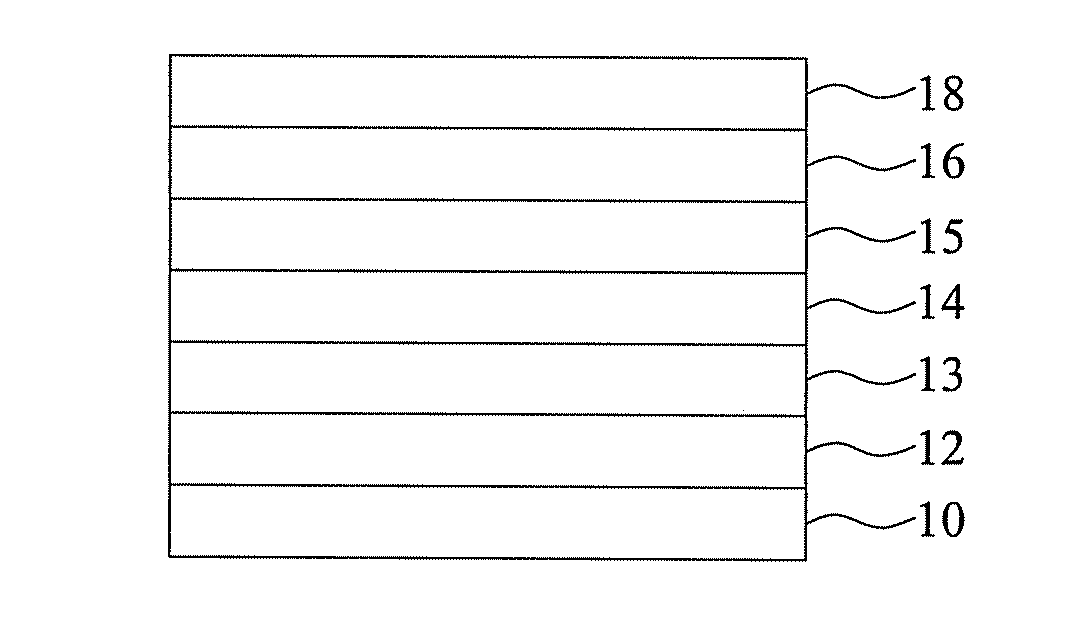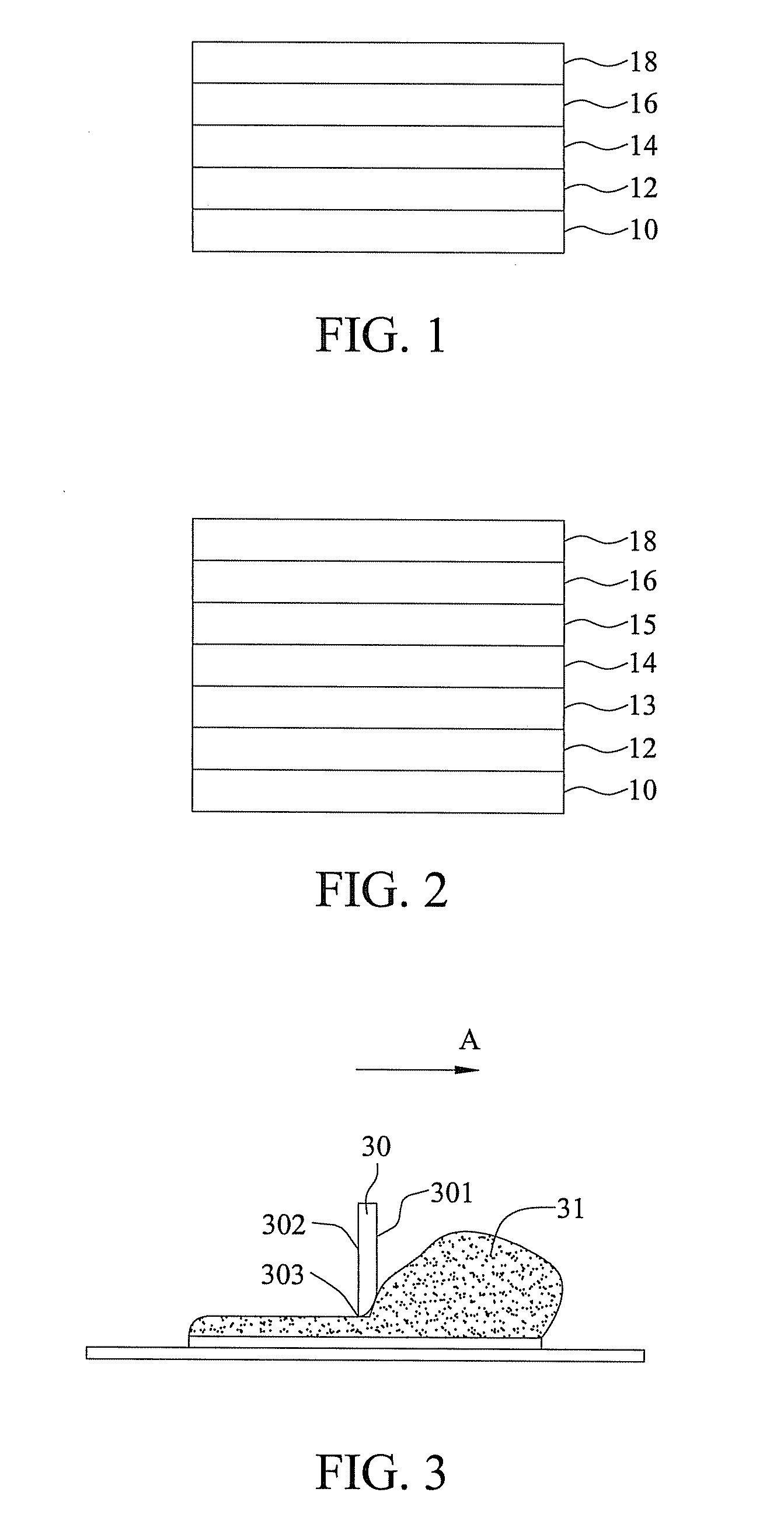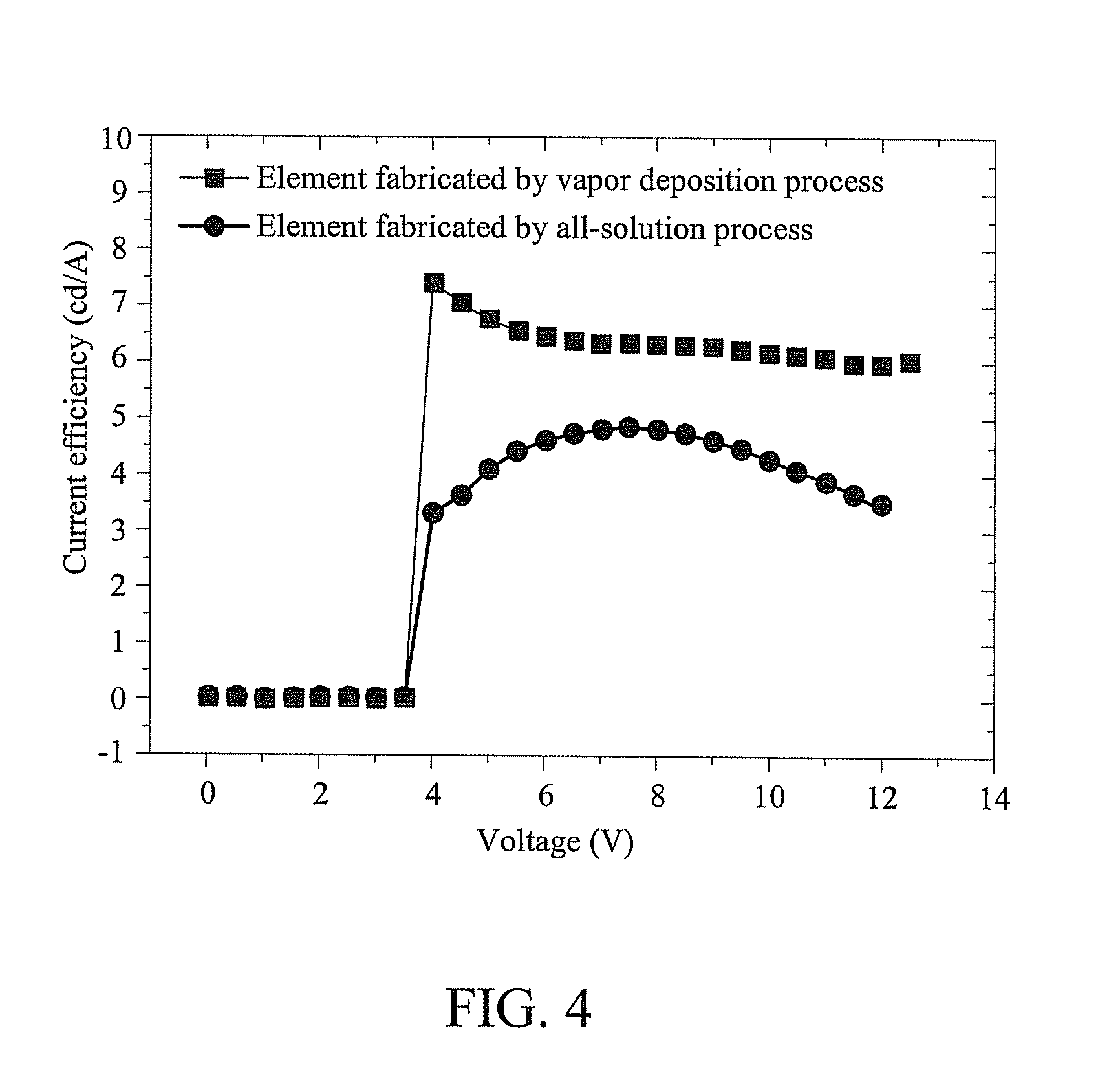Organic light-emitting material, organic light-emitting element using the same and method of forming the same
- Summary
- Abstract
- Description
- Claims
- Application Information
AI Technical Summary
Benefits of technology
Problems solved by technology
Method used
Image
Examples
synthesis example 1
SYNTHESIS OF A REPRESENTATIVE COMPOUND OF FORMULA (I)
Step 1
[0039]100 ml of toluene and 50 ml of ethanol were added to a 250 ml three-necked flask. Deaeration was performed for 30 minutes by adding nitrogen gas. In the presence of nitrogen gas, 4.9 g of pyrene-1-boronic acid (20 mmol), 12.1 g of 7-dibromo-di-n-octylfluorene (22 mmol), 0.2 g of tetrakis triphenyl palladium (Pd(PPh3)4) and 50 ml of 2 M sodium carbonate (Na2CO3) solution were added thereto, and stirred overnight while the temperature reached 60° C. to obtain a reaction solution. The reaction solution was filtered, and then extracted with water and toluene. The obtained organic layer was dewatered, evaporated under a reduced pressure, and then purified by using a silica gel column to give 7.8 g of a product, 2-bromo-7-pyrenyl-9,9-di-n-octylfluorene (yield: 58%), which had a structure of the following formula.
Step 2
[0040]A 100 ml three-necked flask was dewatered. In the presence of nitrogen, 50 ml of dewatered tetrahydrof...
synthesis example 2
SYNTHESIS OF A REPRESENTATIVE COMPOUND OF FORMULA (II)
Step 1
[0046]A 500 ml round-bottomed flask was dewatered, and then 20 ml of dimethyl formamide (DMF) was added thereto. In an ice bath, 15.3 g of phosphorus oxychloride (POCl3) (0.1 mmol) was added dropwisely, and stirred for 10 minutes at a temperature ranging from 5 to 10° C. after the addition was completed. An amount of 38 g of N-phenyl-N,N-di(4-n-hexylphenyl)aniline (91 mmol) was dissolved in 200 ml of DMF to obtain a mixture. The mixture was added slowly and dropwisely into the flask. After the addition was completed, heating was performed at a temperature ranging from 60 to 70° C., and a reaction took place overnight to obtain a reaction solution. The reaction solution was slowly poured into 1 L of water, neutralized to a reach neutral pH by using 20 wt % of a sodium hydroxide solution, and extracted with ethyl acetate. The obtained organic layer was concentrated under a reduced pressure, and then purified by using a silica...
synthesis example 3
SYNTHESIS OF A REPRESENTATIVE COMPOUND Of FORMULA (a)
Step 1
[0051]100 ml of toluene and 50 ml of ethanol were added to a 250 ml three-necked flask. Deaeration was performed for 30 minutes by adding nitrogen gas. In the presence of nitrogen gas, 4.9 g of pyrene-l-boronic acid (20 mmol), 12.1 g of 7-dibromo-di-n-octylfluorene (22 mmol), 0.2 g of tetrakis triphenyl palladium (Pd(PPh3)4) and 50 ml of 2M sodium carbonate (Na2CO3) solution were added thereto, and stirred overnight while the temperature reached 60° C. to obtain a reaction solution. The reaction solution was filtered, and then extracted with water and toluene. The obtained organic layer was dewatered, evaporated under a reduced pressure, and then purified by using a silica gel column to give 7.8 g of a product, 2-bromo-7-pyrenyl-9,9-n-octylfluorene (yield: 58%), which had the structure of the following formula.
Step 2
[0052]A 100 ml three-necked flask was dewatered. In the presence of nitrogen, 50 ml of dewatered tetrahydrofur...
PUM
| Property | Measurement | Unit |
|---|---|---|
| Volume | aaaaa | aaaaa |
| Weight | aaaaa | aaaaa |
| Surface area | aaaaa | aaaaa |
Abstract
Description
Claims
Application Information
 Login to View More
Login to View More - R&D
- Intellectual Property
- Life Sciences
- Materials
- Tech Scout
- Unparalleled Data Quality
- Higher Quality Content
- 60% Fewer Hallucinations
Browse by: Latest US Patents, China's latest patents, Technical Efficacy Thesaurus, Application Domain, Technology Topic, Popular Technical Reports.
© 2025 PatSnap. All rights reserved.Legal|Privacy policy|Modern Slavery Act Transparency Statement|Sitemap|About US| Contact US: help@patsnap.com



